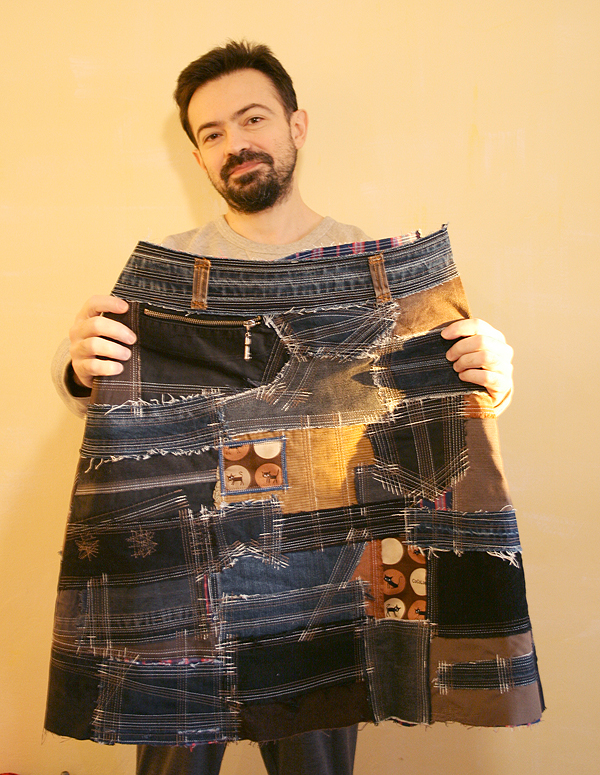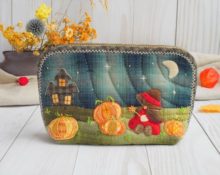One awkward movement sometimes turns into a disaster for clothes - the fabric gets caught on something sharp and breaks. Is the item hopelessly damaged? Not at all, because there are patches! Do you think this is a relic of the past? But the Japanese don't think so! Their boro patches triumphantly walk down fashion catwalks...

Japanese “boro” patch – what is it?
The boro technique involves using scraps of fabric in the process of sewing clothes.

REFERENCE! In recent years, the patchwork technique has been gaining popularity. After all, it symbolizes respect for nature and allows you to reuse materials.
Patchwork found its origins in low-income Japanese families. Then people had no choice but to extend the life of their clothes by sewing on leftover fabric.
However Nowadays, this technique has become the center of attention of many popular designers..
What is unique about the traditional Japanese patch?
Many years ago, poor Japanese peasants were forced to use patches in their clothing. Since cotton was considered a real luxury, craftsmen created costumes from hemp fabric, stitching it with cotton thread.

Thus, many ornamental sewing techniques arose. The poor worked in the same clothes, unable to buy a new suit.
Of course, over the years the clothes were torn, which is why they needed “restoration”. The poor people sewed on more and more scraps of fabric. And over time, it became like a family tradition that was passed down from generation to generation. Gradually, the Japanese patch acquired many features that distinguish it from other types of sewing from fabric scraps.
ATTENTION! The color and density of modern denim makes it an ideal fabric for patchwork.
Features of the “boro” patch technique
The Japanese patching technique has a number of features.

- Craftsmen create unusual drawings on canvas using "forward the needle". This helps not only to effectively sew the material, but also to give it an aesthetic appearance.
- The Japanese love floral designs. They are found in the form of embroidery or already painted patches.
- Comes into play patchwork, tassels and fringe as decorations.
- Masters do not use sewing machines during work. Everything is done with your own hands, because the soul is put into every piece.
- The most commonly used fabrics are silk rather than cotton.
The Japanese patch technique acquired its current face through a long process of renewal and transition from generation to generation. Starting his journey at the hands of the poor, “Boro” moved into the workshops of professional designers and found its way into the most fashionable wardrobe items.
IMPORTANT! The sashiko stitch is most often used to join flaps together. White, bluish and blue threads should be used. To make the sewing process easier, it is better to use a metal thimble.
How is boro used in Japan?
The Japanese revere the patchwork technique, treating it as a part of history and a reminder of their ancestors.

Of course, successfully fitting pieces with patches into your wardrobe is not so easy. However Most “patchwork” wardrobe elements fit very harmoniously into the casual style.
Some Japanese brands only use boro in the process of creating clothes. At the same time, they use only expensive materials and get to work manually. The cost of such products is high. However, fans of patchwork techniques managed to find their own charm in such clothes.

IMPORTANT! The boro technique, in addition to its aesthetic appearance, also has a functional meaning. Flaps help hide stains, holes on clothes, and allow you to lengthen wardrobe items.
Japanese patch in modern fashion
Things sewn from many scraps look extremely unusual.

- Sometimes wealthy lovers of the East buy old kimonos, embroidered from many pieces of hemp, and hang them on the wall as an unusual interior decoration.
- Fashionistas wear items made from patches in everyday life, organically fitting them into their style casual. Unusual shirts containing scraps of delicate fabrics with different prints are ideally combined with long skirts or jeans.
- Patchwork bags have found widespread use around the world. By the way, you can even sew such a handbag yourself without using a sewing machine.

- The boron technique has found wide application in Mori style. Multi-layered clothing, a combination of styles, shades and fabrics create a holistic image.

It is surprising that a sewing technique invented by poor people several centuries ago has gained widespread popularity among designers of our time. Even reputable brands use boro to create unique collections. They rely on the features of this technique, passed down from generation to generation.


 0
0





